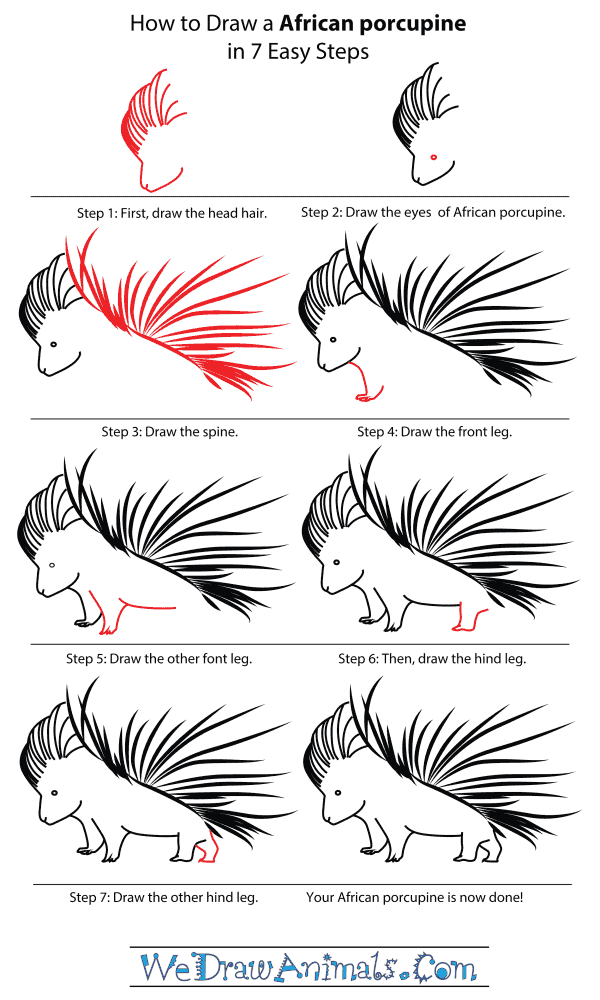In this quick tutorial you'll learn how to draw an African Porcupine in 7 easy steps - great for kids and novice artists.
The images above represent how your finished drawing is going to look and the steps involved.
Below are the individual steps - you can click on each one for a High Resolution printable PDF version.
At the bottom you can read some interesting facts about the African Porcupine.
Make sure you also check out any of the hundreds of drawing tutorials grouped by category.
How to Draw an African Porcupine - Step-by-Step Tutorial
Step 1: Let's draw an African porcupine! For the head, draw a small letter V for the face, then trace long lines that curl toward the back, all along the top of the head. Add a very short line at the tip of the face for the snout.
Step 2: Add a tiny circle in the middle of the face for the eye.
Step 3: Trace a long line going across and down the back. From there, you are going to trace long lines that curl back along the length of the back. Here's a hint: the lines don't all have to be the same size!
Step 4: Draw the first front leg by tracing two lines that start wide apart at the top and closer together toward the end of the foot. This leg is short!
Step 5: Draw the other front leg right next to the first and in the same way. Then, trace a short, curved line across the bottom for the belly.
Step 6: Trace the hind leg, now, much like you did the front legs, except this leg isn't wide at the top.
Step 7: Finish your porcupine by tracing the last hind leg exactly like you drew the first hind leg. There's your African porcupine!
Interesting Facts about the African Porcupine
The African porcupine belongs to the rodent family, just like squirrels, mice and rats. It makes its home in North and Northwest Africa, just like its name suggests. It usually grows to be about two to three feet long, and it typically weighs between 30 and 60 lbs.
Did you know?
- The African Porcupine eats a lot of stuff that you would find on the ground, like roots and bulbs. It also likes to eat fruit.
- The average lifespan of an African Porcupine is 15 years.
- When the African Porcupine feels threatened, it raises up and then rattles its quills to try and scare off whatever may be scaring it. If that doesn’t work, it will try to stick the predator with its quills. Unlike other porcupines, the African Porcupine does not shoot its quills.
- One thing most rodents have in common is that their teeth continue to grow. If the African Porcupine did not chew on branches or bones, its teeth would grow to be too long for its mouth!
You may not think so to look at them, but African Porcupines are actually really good at swimming! They also have an amazing sense of hearing, but that’s because their eyesight is so bad.








